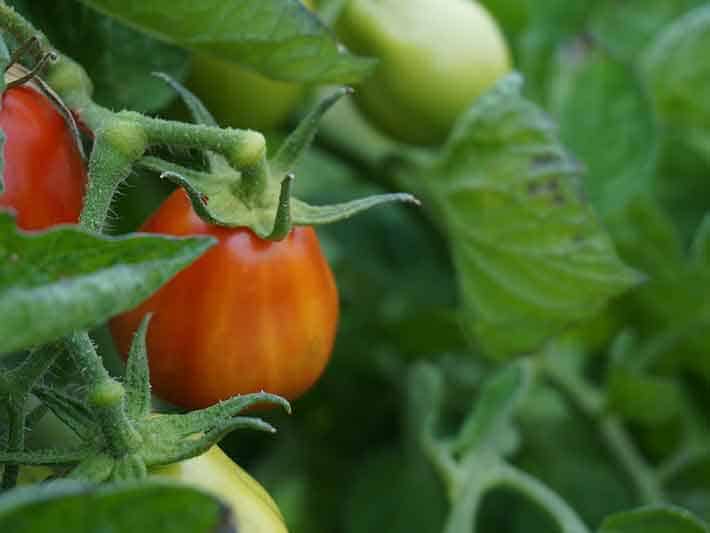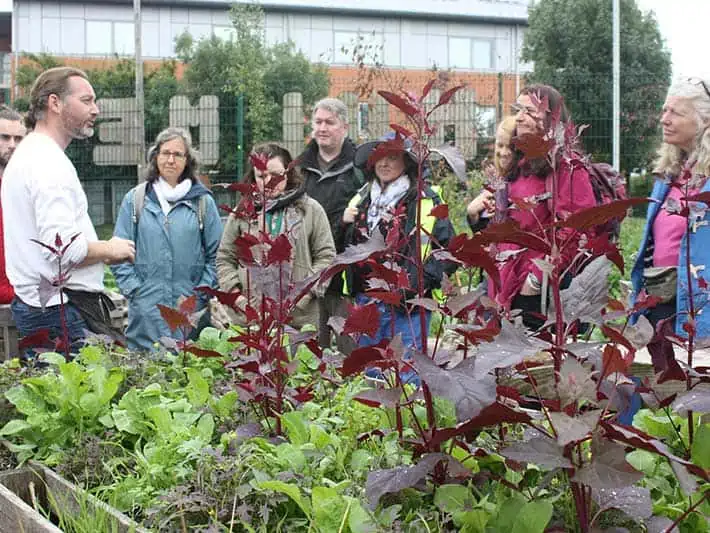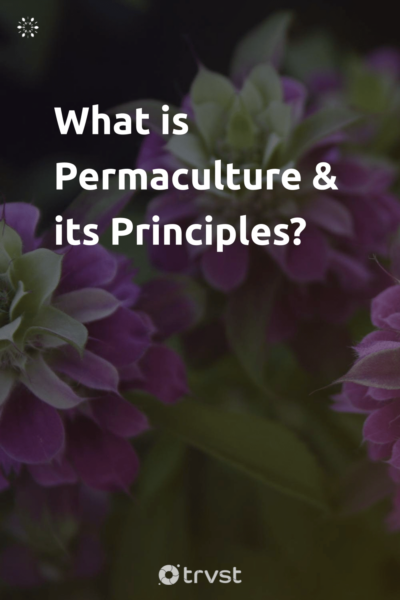What is Permaculture & Its Principles?
Around the world, there is untold evidence of humans as destructive agents to nature. The human system has been to collect until resources become exhausted and then move on to something else. Permaculture design is a system of bringing together conceptual, material, and non-material components in a strategic order that benefits all. You might ask, what is permaculture and its principles?
What is Permaculture?
Permaculture is a design system that integrates land, people, and other resources in a way that imitates the natural environment optimally. It is man's attempt to exist in harmony with natural systems in the most sustainable way.
It integrates landscapes and people to meet their energy, material, and non-material needs. The system designs out waste; it works on closed-loop systems seen across natural ecosystems. You can think of it as a way for humans to work with nature instead of making nature work for them.
Pioneers of the permaculture approach coined the words from "permanent agriculture" and "permanent culture."
Permaculture studies are multidisciplinary. Permaculture draws on ideas and disciplines encompassing waste management, agricultural systems, organic farming, energy, natural building, sustainable development, forestry, aquaculture, animal systems, water harvesting, and hydrology. It also includes appropriate technology, economics, and community development. A permaculture garden considers whole systems thinking and contains elements that all work together strategically.
The Permaculture Research Institute notes that the basis of permaculture is design, and, as such, can be trained and the skills acquired. Keen on learning abour practicing permaculutre? They have a wealth of info available, including the permaculture design course and an active community forum to learn more.
Permaculture's Founding Father
We know Bill Mollison as the father of permaculture. He defined permaculture as a design system for creating sustainable human environments.
Permaculture is a philosophy of working with, rather than against nature; of protracted and thoughtful observation rather than protracted and thoughtless labor; and of looking at plants and animals in all their functions, rather than treating any area as a single product system
Bill Mollison
He taught environmental psychology at the University of Tasmania before resigning in 1978. Bill Mollison designed the rainbow snake, a partial oval shape formed by a snake encompassing an interconnected natural ecosystem. Other elements like rain, sunshine, a tree, and the earth feature in the diagram have symbolic meanings.
Bill Mollison wrote many permaculture books in his lifetime. Some popular titles are An Introduction To Permaculture and Permaculture: A Designers Manual. David Holmgren worked closely with Bill Mollison for over two years. Together they published the book; Permaculture One. Bill Mollison passed away in 2016.
The solutions permaculture provides apply in rural and urban environments on small to large scales. Permaculture practitioners and ordinary people can use permaculture principles.
Permaculture is not just about sustainable agriculture or consumption. It takes our social culture into account as well. It is essentially a land use and community movement.
Permaculture uses cultural practices like sheet mulching, trellising, mixed farming, and modern ideas like recycling and water treatment.
Permaculture Principles

In his book "Permaculture: Principles and Pathways Beyond Sustainability, "David Holmgren published the twelve principles. The principles of permaculture serve as guidelines for anyone who wants to practice permaculture1. There are as follows:
Observation and interaction
Creating an excellent design depends on thoughtful observation rather than protracted and hurried action. Before coming up with your design approach, you should observe the land through the seasons. This will give you a deeper understanding of the land's dynamics and its uniqueness.
If you observe your land for at least a year, you will notice the natural selection of plants that grow there. You will also see the effects of rain, sunshine, wind, and other elements on it. You will be able to find out how animals interact with the land.
We can only call for change when we have observed the adverse effects of land-use methods. We can avoid wasting time and resources on trials and errors toward a more sustainable system through proper observation.
Integrate rather than segregate
This is the principle of connection; each element in the landscape should connect to one or more elements in beneficial ways. For example, cover crops produce food, prevent erosion, and can be used as compost when they die. They also use soil nutrients from earthworms, rain, and the sun to grow and survive.
The plant serves the need of some elements and accepts the product of others as input. Integration in permaculture is a rule that you can not ignore. Because a stand-alone element will either become a parasite or become endangered.
In permaculture, two central statements rule self-reliant systems. The first is that "each element performs many functions," and The second is that "many elements support each important function."
Capture and store energy
You can tap into existing energy systems to capture and store them. You can divert saved energy to other purposes, reinvesting it to meet even more needs. Rainwater, for instance, wets the land and makes crops grow. However, it is an energy source that can be captured, stored, and used for various things. For example, harvesting rainwater can be used to water the garden or indoor plants.
We can prevent waste and pollution when we catch and store energy from local renewable and non-renewable energy flows. We can also rebuild capital and earn income from captured energy. The sun, wind, agricultural waste, water flows, and industrial and commercial activities are energy sources. You can find other uses for a particular form of energy that will not hinder its primary function.
Apply self-regulation and accept feedback
A completely self-maintaining and regulating system is the ideal permaculture design. But we are still a way off from reaching that goal. However, if we understand how positive and negative feedback plays out in nature, we can create designs that limit inappropriate developments or behaviors. This will help in reducing the effort needed for physical involvement in correcting anomalies.
You can create a self-regulating system by making every element in it as self-reliant as possible. A system composed of self-reliant elements is more immune to challenges. For example, using semi-wild, self-reproducing crops and livestock instead of dependent highly bred varieties. The semi-wild independent varieties are tougher and will fare far better with minimal human input.
Produce no waste
Sustainability will be unachievable if we cannot avoid waste because the waste will cause scarcity sooner than later. A permaculture designer's guiding philosophy is to make optimum use of available natural resources in a system that designs out waste. Permaculture designs uphold the traditional values of frugal care for material goods.
Although the modern radical perspective views waste as an opportunity, there is presently not enough recycling infrastructure to make this true worldwide. The rate of pollution is still higher than the rate of recycling worldwide.
Industrial products are supposedly consumable by humans, but this is not entirely true. The products often come in packaging that is not consumable by humans, plants, or animals. If you have a garden, your design should operate on systems that allow some elements' output to become inputs of other elements.
Use and value renewable resources and services.
While we may need some non-renewable materials to establish a productive system, the ideal permaculture approach uses more renewable materials in the day-to-day production process. This is a sustainable way of consumption as natural systems will automatically replace renewable materials over some time.
Consuming renewable services differ from using renewable materials. Renewable services include those we gain from plants, soil, animals, and water without them being consumed. For example, chopping off a tree to make furniture uses renewable material. Using the tree for shade or shelter is the consumption of a renewable service.
Use value and diversity.
Diversity in the ecosystem is what sustains life. The different life forms in existence interact in complex ways that ensure survival for all. For instance, plant life is supported by earthworms, microbes, pollinating insects, and other organisms.
The functions of diversity in nature, culture, and permaculture are complex and sometimes contradictory. However, the tension it creates requires a balance between elements of nature.
We have identified monoculture as a significant cause of vulnerability to pests and diseases. On the other hand, polyculture is cultivating or rearing multiple species of plants and animals in an integrated system. Permaculture gardens use this as an effective method of reducing vulnerability to pests and diseases. For larger permaculture farms, it reduces the effects of unfavorable seasons and market fluctuations.
Design from patterns to details
Patterns in natural systems allow us to understand how and which elements work together. We can recognize patterns through observation and interaction. Practitioners developed modern permaculture by observing natural ecosystems' patterns and designing them to integrate into our everyday lives.
The forest is the model of permanent agriculture on which permaculture zones are based. We can identify a form of energy and mimic its movement in our organic gardening systems by identifying working patterns.
Get a yield
The philosophy of permaculture is to encourage maximum productivity at every point. We cannot ensure a supply of resources for the future generation if we are lacking. It will soon become obsolete if the design system does not produce any immediate and worthwhile yield. We will leave it behind as things progress.
Elements that fill a need in nature, market situations, and human systems of demand stay relevant. And they reward the labor put into their production.
For example, if you need to plant trees in your garden for shade or as an anti-erosion measure, plant fruit trees. Fruit trees will produce food as immediate yield before providing spacious shade. This product keeps the trees relevant before and after they have served your primary purpose.
Use small and slow solutions.
Your foray into permaculture should be a slow and steady movement. You need to break down your goal into small chunks. Your design system should perform its functions at the smallest practical and energy-efficient scale. This is because small systems are easier to manage. You will also find it easy to measure progress or detect mistakes in a small system.
An example of a small and slow solution is edible landscaping. You just replace conventional landscaping with ones that can also serve as a food production source. Effective management is necessary for maximum yield and low waste production. It is tempting to imagine grand designs for your garden and implement them all as soon as possible. But if you make it a rule to break your design into small tasks, you can reduce the possibility of costly errors.
Creatively use and respond to change.
The durability of permaculture is in its adaptability. Nature is not stagnant, and a permaculture design that is flexible and responsive to environmental changes will be most productive. You can take advantage of uncontrolled changes in your garden by introducing elements suited to make the most of the situation.
Ecological succession within cultivated systems is an example of this principle. For instance, we plant fast-growing trees that provide nitrogen that nourish the soil and provide shade for slow-growing food trees. The food trees eventually mature and succeed the fast-growing trees.
Use edges and value the marginal.
The living soil is only a few centimeters deep. It is the edge of the terrestrial ecosystem. Soil is the interface between non-living mineral earth and the atmosphere. It is important to all terrestrial life.
Few species can survive where the soil is shallow, poorly drained, and compacted. Deep, well-drained, and well-aerated soil is needed for agriculture and soil organisms to thrive. The tidal estuaries serve as an interface between land and sea. Freshwater from streams rides over.
The Ethics of Permaculture

Permaculture ethics provide us with a sense of right or wrong as the practices and methods keep developing2. The ethics are:
Care for the Earth
We owe it to ourselves to care for the environment. Permaculture only stresses this. Our health and survival depend on the state of the planet. The edible plants, water, and air are a few resources we get from the earth.
You can care for the world by seeking eco-friendly alternatives to traditional ways of doing things. Permaculture farmers and practitioners use agricultural practices and gardening techniques that replenish the soil and encourage biodiversity.
We must care for both the living and non-living components of the earth. Such as air, water, plants, animals, and all other things that make up natural landscapes.
Care for people
This involves caring for yourself and your household in a way that does not cause problems for others. To do this, you need to know how your consumption of food, energy, shelter, and other material items affects other people.
Caring for people encourages self-reliance and creates a feeling of communal responsibility. Permaculture encourages responsible consumerism. When we practice permaculture, we consider the ethical consequences of how we meet our needs. When you design your lifestyle around permaculture values, you avoid products made with exploited labor.
Reinvesting Abundance
When the land is in good condition, it will produce abundant yield. Without proper management, this abundance can cause waste. Reinvesting the excess resource in the right way will help to create a self-maintaining ecosystem.
We can redirect surplus time, labor, money, energy, food, and information to develop other useful flows. This ethic of permaculture encourages the view of available natural materials as renewable rather than scarce. This outlook reduces the need for constant importation of new materials.
Conclusion
Permaculture practices reiterate the beneficial connection that exists between elements in nature. It is not a production system but a philosophy, apart from conventional agriculture, guiding land use and community planning. It is like a toolbox of ideas and principles that the home gardener and professional landscaper, through a full-scale permaculture farm, can use for a more sustainable environment.
As a gardening technique, permaculture design principles can expand the functions of your house garden. Instead of simply serving aesthetic purposes, you can use your garden for food production.
The philosophy of permaculture is sustainability through integrated elements. You can search for ways to apply the philosophy of permaculture around you. When we think of permaculture, the words permanent and agriculture come to mind. Therefore when you design a permaculture system, think about longevity and relevance. Permaculture refers to a truly ecological design and agriculturally productive ecosystems that cater to all life forms.
Now, what is permaculture to you and your local environment?
| 1 | Brain, Roslynn & Thomas, Blake. (2013). Permaculture. |
| 2 | Brain, Roslynn & Thomas, Blake. (2013). Permaculture. |
Jen’s a passionate environmentalist and sustainability expert. With a science degree from Babcock University Jen loves applying her research skills to craft editorial that connects with our global changemaker and readership audiences centered around topics including zero waste, sustainability, climate change, and biodiversity.
Elsewhere Jen’s interests include the role that future technology and data have in helping us solve some of the planet’s biggest challenges.

